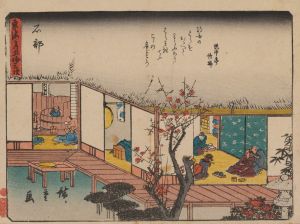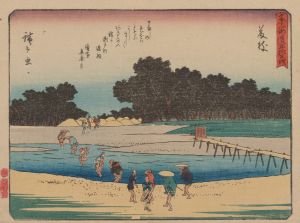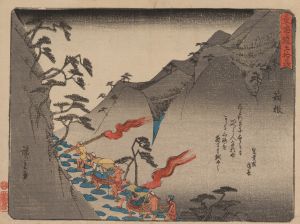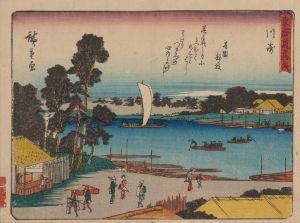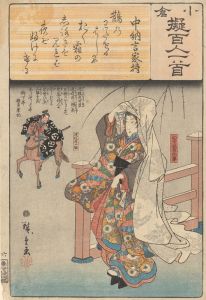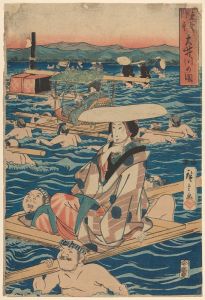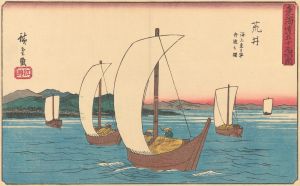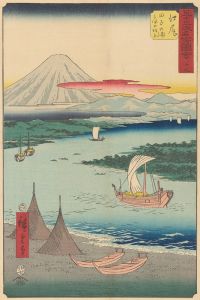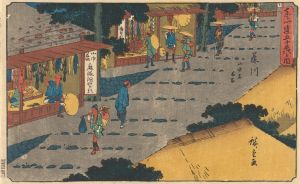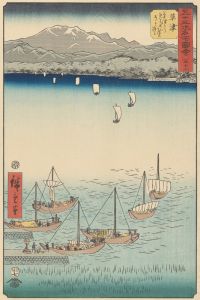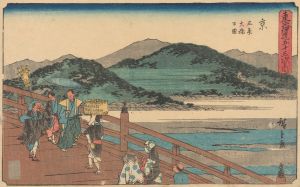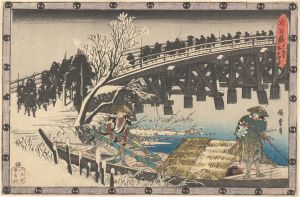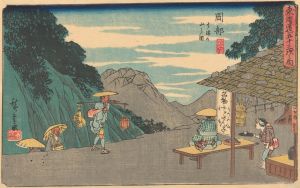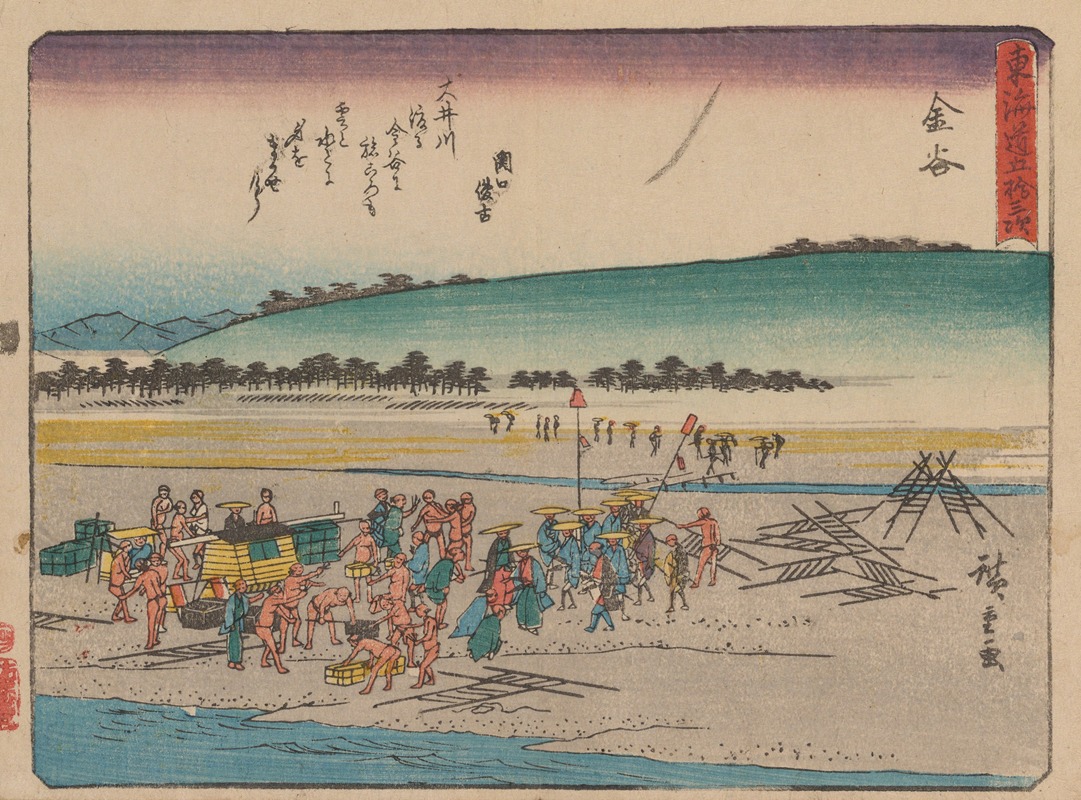
Tokaido gojusantsugi, Pl.25
A hand-painted replica of Andō Hiroshige’s masterpiece Tokaido gojusantsugi, Pl.25, meticulously crafted by professional artists to capture the true essence of the original. Each piece is created with museum-quality canvas and rare mineral pigments, carefully painted by experienced artists with delicate brushstrokes and rich, layered colors to perfectly recreate the texture of the original artwork. Unlike machine-printed reproductions, this hand-painted version brings the painting to life, infused with the artist’s emotions and skill in every stroke. Whether for personal collection or home decoration, it instantly elevates the artistic atmosphere of any space.
"Tokaido gojusantsugi, Pl.25" is a woodblock print created by the renowned Japanese ukiyo-e artist Andō Hiroshige. This print is part of Hiroshige's famous series "The Fifty-three Stations of the Tokaido" (Tokaido gojusantsugi), which depicts the various stations along the Tokaido road, the main travel route connecting Edo (modern-day Tokyo) to Kyoto during the Edo period in Japan.
Andō Hiroshige, born in 1797 and died in 1858, is celebrated for his landscape prints and his ability to capture the beauty and essence of Japanese scenery. His work in the Tokaido series is particularly notable for its detailed and evocative portrayal of the journey along the Tokaido road, which was one of the five major routes of the Edo period and the most important one for travel and trade.
The Tokaido road had 53 official stations, and Hiroshige's series includes a print for each station, plus one for the starting point in Edo and one for the endpoint in Kyoto, making a total of 55 prints. Plate 25 in this series corresponds to the station of "Fujieda." Each print in the series captures the unique characteristics and atmosphere of the respective station, often including travelers, local inhabitants, and the natural landscape.
In "Tokaido gojusantsugi, Pl.25," Hiroshige illustrates the Fujieda station, which is known for its scenic beauty and its role as a bustling post town. The print typically features travelers crossing a bridge over a river, with the town and its surroundings depicted in the background. The composition often highlights the interaction between people and their environment, showcasing the daily life and the natural beauty of the area.
Hiroshige's use of color, perspective, and composition in this print, as in the rest of the series, demonstrates his mastery of the ukiyo-e technique. The prints were created using woodblock printing, a method that involves carving an image into a wooden block, applying ink, and then pressing the block onto paper. This technique allowed for the production of multiple copies of each print, making Hiroshige's work widely accessible.
The "Fifty-three Stations of the Tokaido" series was first published in 1833-1834 and quickly became popular, solidifying Hiroshige's reputation as one of the leading ukiyo-e artists of his time. The series not only provides a visual record of the Tokaido road but also offers insight into the culture, geography, and daily life of Japan during the Edo period.
Hiroshige's work, including "Tokaido gojusantsugi, Pl.25," continues to be celebrated for its artistic and historical significance. His prints are held in high regard by art historians and collectors and are featured in major museums and collections around the world. The series remains an important example of Japanese woodblock printing and a testament to Hiroshige's enduring legacy as a master of ukiyo-e.





